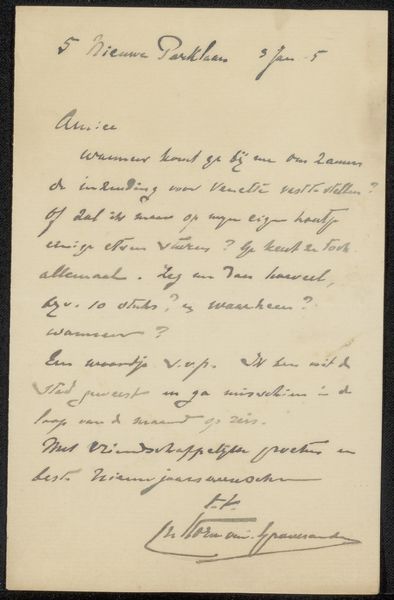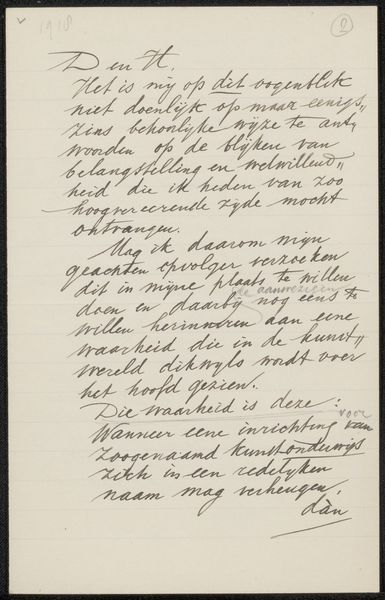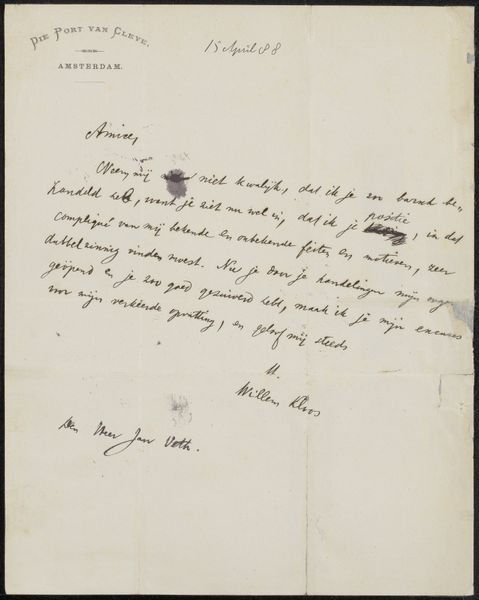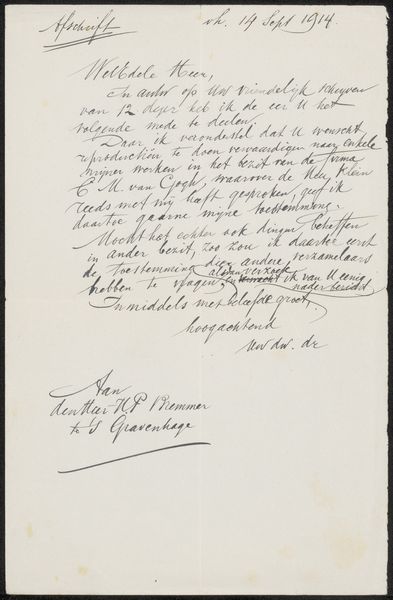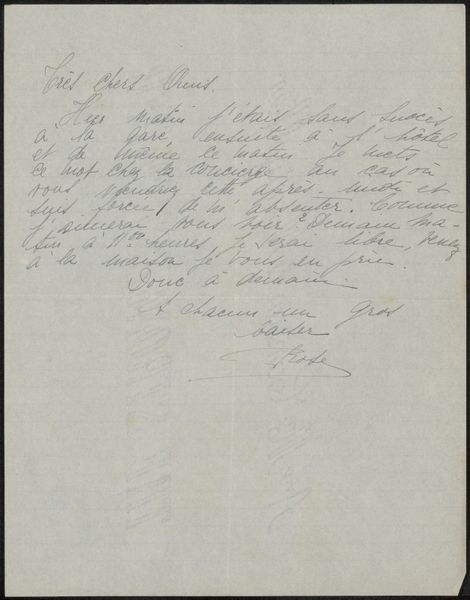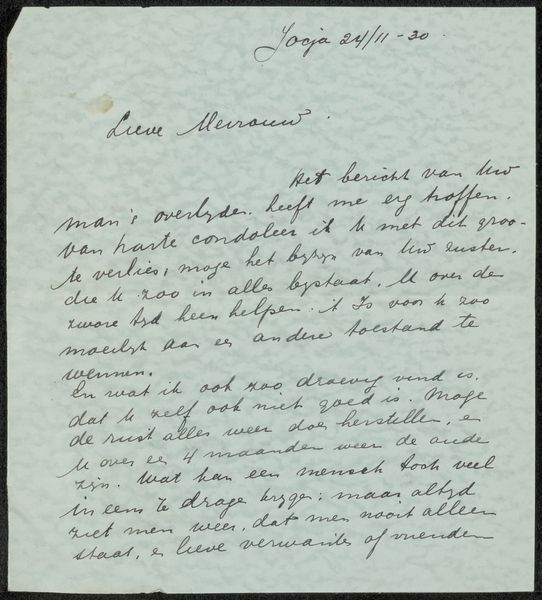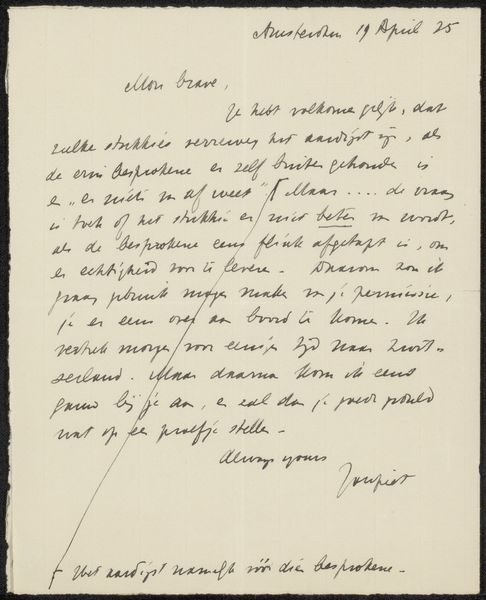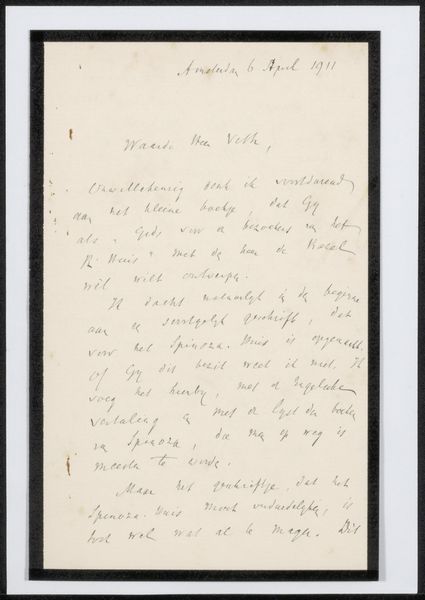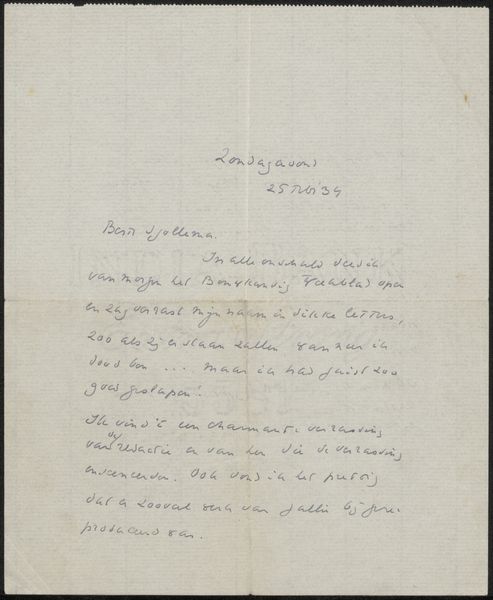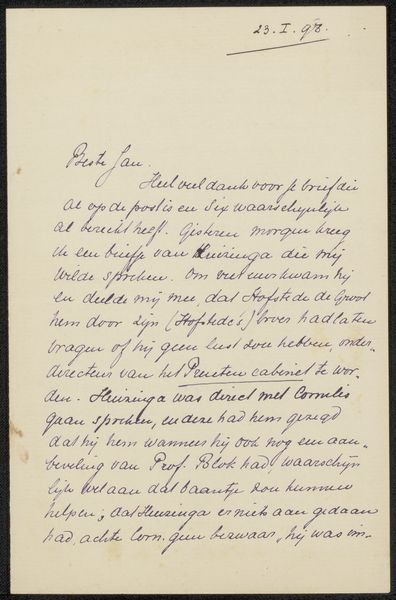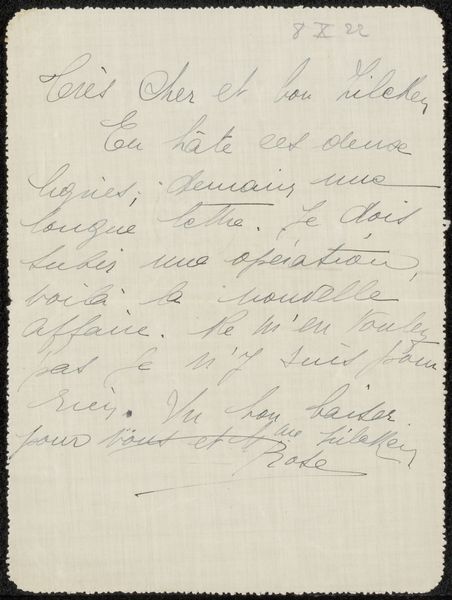
Copyright: Rijks Museum: Open Domain
Curator: This ink on paper drawing is a piece titled "Brief aan Jan Veth," dating back to somewhere between 1904 and 1911. The piece contains abstraction with an element of romanticism and exquisite calligraphy. What are your initial thoughts? Editor: It looks like a torn-up letter rescued from a dusty attic trunk! So fragile, almost like a ghost whispering secrets. There’s a kind of quiet beauty to it, don’t you think? It evokes a past era; makes you wonder about lost love or political intrigue! Curator: It indeed evokes a time gone by, with a distinctive focus on cultural heritage! As an epistolary communication between Alberdingk Thijm and Jan Veth, it invites questions of accessibility and censorship relative to elite literary culture. How are the common readers or art viewers positioned against it, what’s revealed and concealed? And does it play any symbolic role for understanding identity construction among late 19th, early 20th-century Dutch intellectuals? Editor: Wow, you always go so deep! I'm thinking more about the texture, you know? The way the ink bleeds a little, the slightly yellowed paper… You can almost smell the old ink and musty paper. Imagine the hand that wrote this! Was the writer agitated, calm, in love? So many stories hiding between those looping letters. It seems someone cherished or valued this enough to keep it this long... Curator: Absolutely. The very materiality carries echoes of social conditions from more than a century ago. From a sociohistorical point of view, we might explore how societal factors and period expectations constrained Thijm and Veth as prominent intellectual men. This would let us explore both their creative expressions and lived realities. Editor: It's amazing how such a simple piece of paper and ink can conjure so many thoughts and feelings. Now, what I really want to know is... did Jan Veth ever write back? What was the correspondence like between these two artists? It ignites curiosity, right? Curator: Right. To engage with archives such as “Brief aan Jan Veth,” one needs to always critically address the issue of social-power hierarchies implicated across axes of gender, race, and class. Editor: Agreed, it's never just a piece of paper. But for me, it is a tiny, imperfect portal to another time, brimming with possibilities, and it all boils down to storytelling. Thanks! Curator: Yes. The letter presents a reminder of art’s function, to not only offer personal visions, but invite necessary and critical inquiries on a historical timeline.
Comments
No comments
Be the first to comment and join the conversation on the ultimate creative platform.
